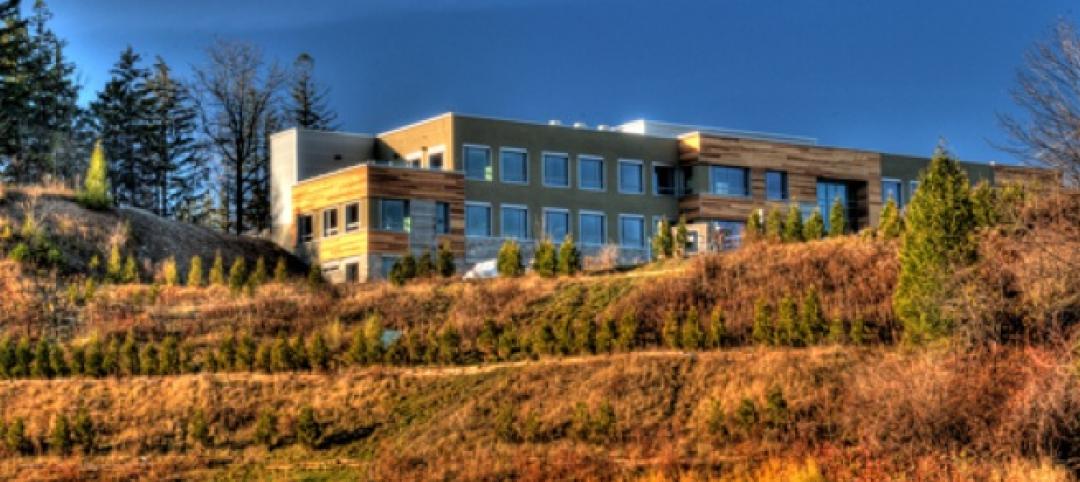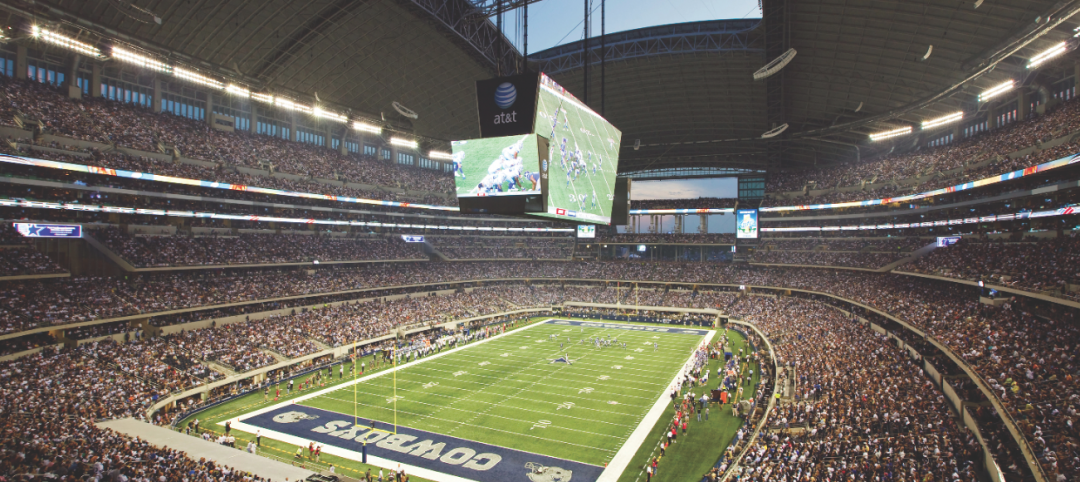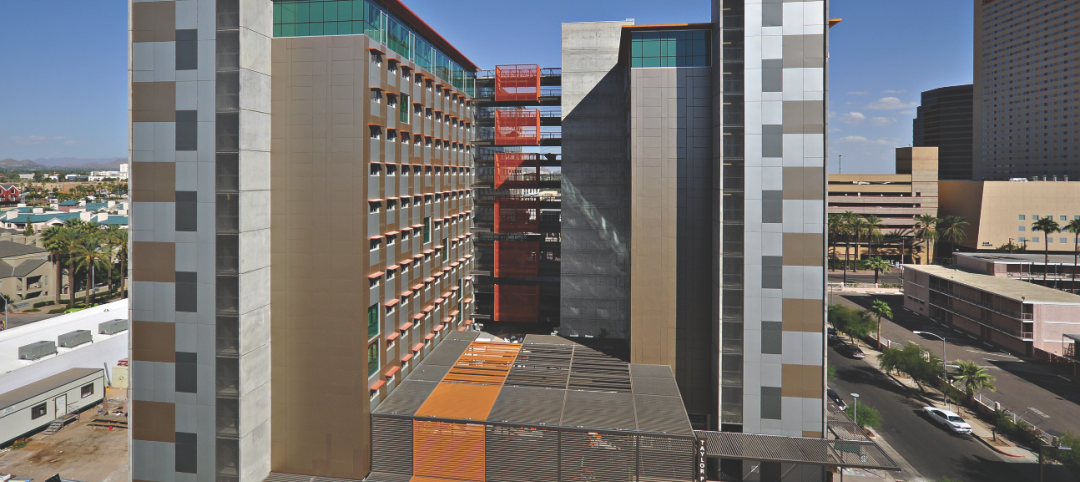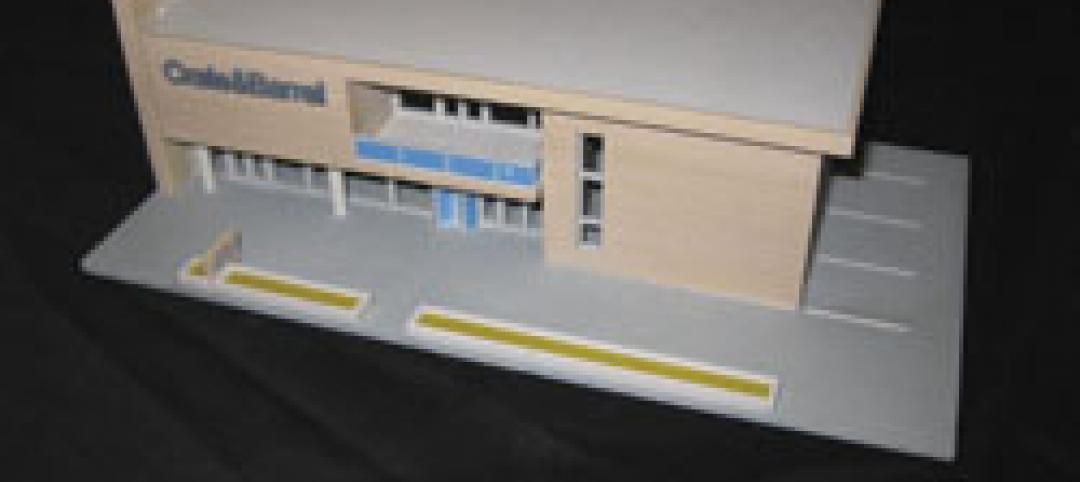A new computational model developed by researchers at MIT takes ambient vibrations and analyzes them to pick out features in the noise to give indications of a building’s stability, MIT News reports. The feedback can then be used to monitor the building for damage or mechanical stress. Think of it as getting your blood pressure or cholesterol checked regularly to find warning signs of future problems before they become too dire.
The model is being tested on the tallest building on the MIT campus, the 21-story Green Building, a research building made of reinforced concrete. The researchers attached 36 accelerometers to selected floors from the building’s foundation to its roof to record vibrations.
But in order for these recordings to actually serve a purpose, the team needed to figure out how to take the data and link it to the health characteristics of the building, according to Oral Buyukozturk, a professor in MIT’s Department of Civil and Environmental Engineering.
Their solution was to create a computer simulation of the Green Building as a finite element model. MIT News describes this type of model as “a numerical simulation that represents a large physical structure, and all its underlying physics, as a collection of smaller, simpler subdivisions.” The researchers then added parameters to the model, such as the strength and density of concrete walls, slabs, beams, and stairs in each floor.
With all of this done, the researchers are able to then add something like the vibration caused by a passing truck to the simulation in order to see how the model predicts the building and its elements would respond. To make the model as accurate as possible, data from the Green Building's accelerometers was mined and analyzed for key features relating to the building’s stiffness and other indicators of health.
The more data that is added over time, the more intelligent the system becomes. The researchers say they are confident that any real life damage in the building will show up in the system.
This type of model will be especially useful to immediately see, after an event such as an earthquake, if and where there is damage to the building.
The researchers’ vision is for a system such as this to be outfitted on all tall buildings, making them intelligent enough to monitor their own health and provide increased resiliency.
Related Stories
| Sep 13, 2010
World's busiest land port also to be its greenest
A larger, more efficient, and supergreen border crossing facility is planned for the San Ysidro (Calif.) Port of Entry to better handle the more than 100,000 people who cross the U.S.-Mexico border there each day.
| Sep 13, 2010
Triple-LEED for Engineering Firm's HQ
With more than 250 LEED projects in the works, Enermodal Engineering is Canada's most prolific green building consulting firm. In 2007, with the firm outgrowing its home office in Kitchener, Ont., the decision was made go all out with a new green building. The goal: triple Platinum for New Construction, Commercial Interiors, and Existing Buildings: O&M.
| Sep 13, 2010
Stadium Scores Big with Cowboys' Fans
Jerry Jones, controversial billionaire owner of the Dallas Cowboys, wanted the team's new stadium in Arlington, Texas, to really amp up the fan experience. The organization spent $1.2 billion building a massive three-million-sf arena that seats 80,000 (with room for another 20,000) and has more than 300 private suites, some at field level-a first for an NFL stadium.
| Sep 13, 2010
'A Model for the Entire Industry'
How a university and its Building Team forged a relationship with 'the toughest building authority in the country' to bring a replacement hospital in early and under budget.
| Sep 13, 2010
Committed to the Core
How a forward-looking city government, a growth-minded university, a developer with vision, and a determined Building Team are breathing life into downtown Phoenix.
| Sep 13, 2010
3D Prototyping Goes Low-cost
Today’s less costly 3D color printers are attracting the attention of AEC firms looking to rapidly prototype designs and communicate design intent to clients.
| Aug 11, 2010
Mark McCracken named chair-elect of USGBC Board of Directors
Mark MacCracken, CEO of CALMAC, Inc., a producer of cold storage energy solutions, has been selected as Chair-elect of the U.S. Green Building Council (USGBC) Board of Directors for the 2010 calendar year. The USGBC Board of Directors is responsible for articulating and upholding the vision, values and mission of USGBC. In 2009, MacCracken was elected to serve a second 3-year term as Director in the Energy Services Seat.
| Aug 11, 2010
Underwriters Laboratories, ICC Evaluation Service announce dual evaluation and certification program for building products
Underwriters Laboratories (UL), the leading product safety testing organization, and ICC Evaluation Service, Inc (ICC-ES), the United States' leader in evaluating building products for compliance with code, today announced a partnership that will provide the building materials industry with a Dual Evaluation and Certification Program for building products.
| Aug 11, 2010
The New Yorker's David Owen: Why Manhattan is America's greenest community
David Owen is a staff writer at The New Yorker and the author of 14 books, most recently Green Metropolis: Why Living Smaller, Living Closer, and Driving Less Are the Keys to Sustainability, in which he argues that Manhattan is the greenest community in America. He graduated from Harvard and lives in Washington, Conn., where he chairs the town planning commission.












